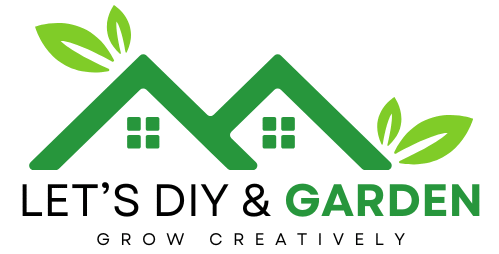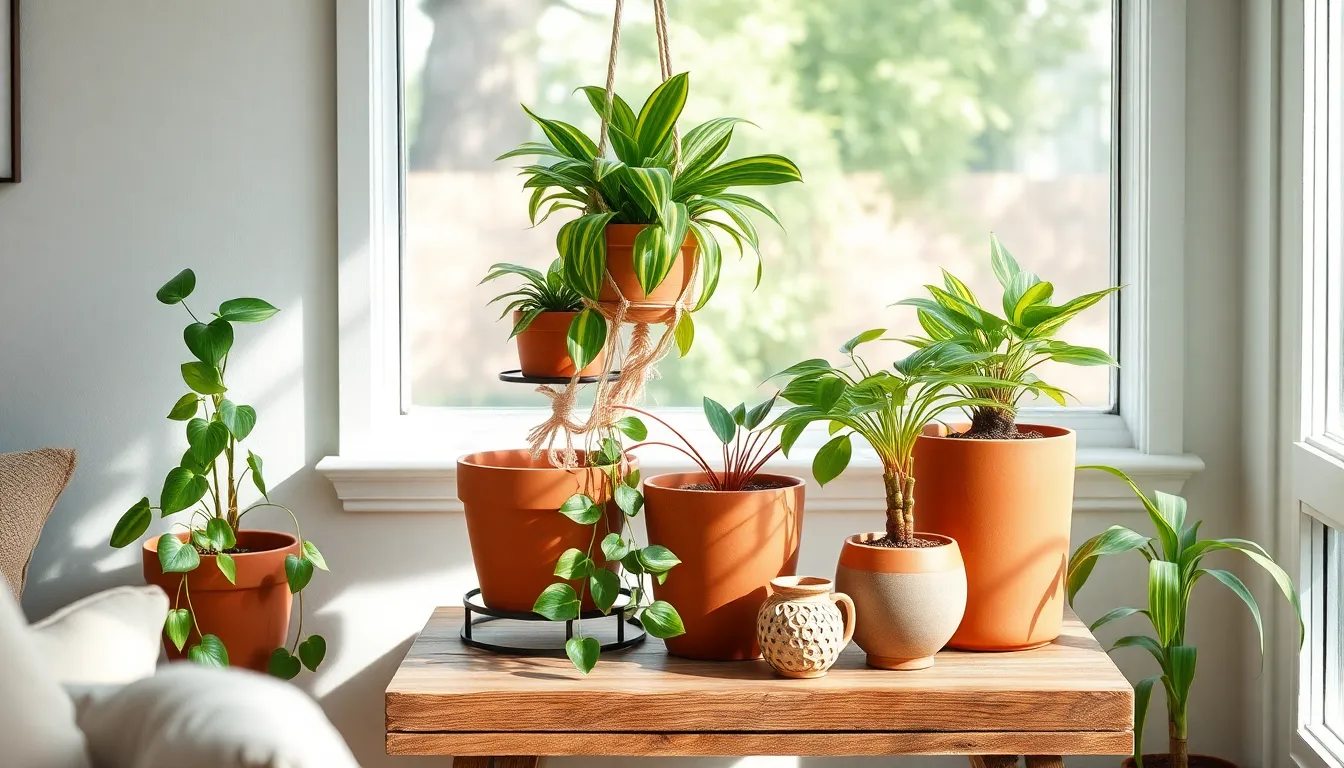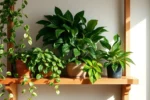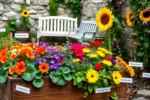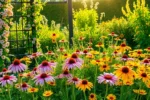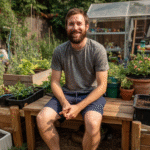In the delightful journey of crafting a vibrant indoor garden, ensuring the safety of our beloved pets is a priority that should never be overlooked. Whether you’re a seasoned plant enthusiast or just beginning to cultivate your green thumb, selecting pet-friendly plants can transform your home into a safe haven for both flora and furry companions. Your garden can be a blossoming sanctuary, and with a touch of thoughtful planning, you can enjoy the beauty of nature without compromising your pet’s well-being.
Understanding which plants are safe for pets is an essential skill that enriches your gardening experience. In this article, we will explore a variety of beautiful, non-toxic plants that can harmoniously coexist with your cats, dogs, or any other curious critters you may have. You’ll discover tips for integrating these plants into your home decor, enhancing your living space while keeping it safe. With this knowledge, you’ll be empowered to create a lush, pet-friendly environment that brings joy to every member of your household.
As you embark on this green adventure, you’ll learn to identify the best plant choices and understand their care requirements, ensuring they thrive alongside your pets. We’ll guide you through the nuances of plant placement and maintenance, fostering an environment where your furry friends are free to roam without risk. By the end of this article, you’ll have a comprehensive understanding of how to nurture a garden that’s as safe as it is stunning. Let’s dive into the world of pet-friendly plants and cultivate a home that’s both beautiful and secure.
Identifying Pet-Safe Plant Species
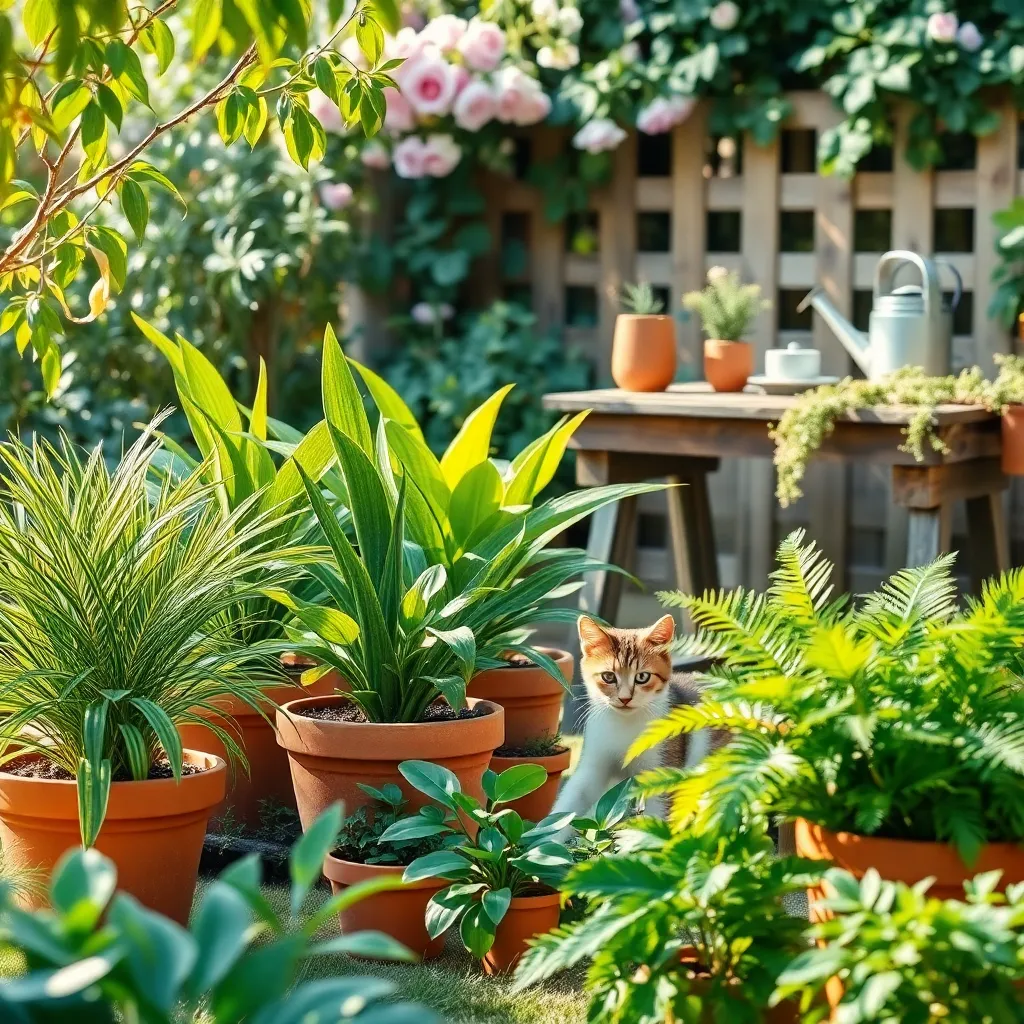
When selecting plants to keep around pets, it is crucial to identify species known to be safe. Spider plants (Chlorophytum comosum) are an excellent choice as they are non-toxic to both cats and dogs and thrive in indirect sunlight.
Opt for plants like Boston ferns (Nephrolepis exaltata), which are equally pet-safe and add lush greenery to any home. These ferns prefer high humidity and indirect light, so consider misting them regularly or placing them near a humidifier.
For those interested in flowering options, African violets (Saintpaulia) are safe for pets and bloom beautifully indoors. They require well-draining soil and should be watered with lukewarm water to avoid cold shock to their roots.
Advanced gardeners might explore growing calathea varieties, which are also pet-friendly. These plants demand a bit more attention with their need for consistently moist soil and filtered light, rewarding care with vibrant, patterned leaves.
Creating a Non-Toxic Indoor Garden
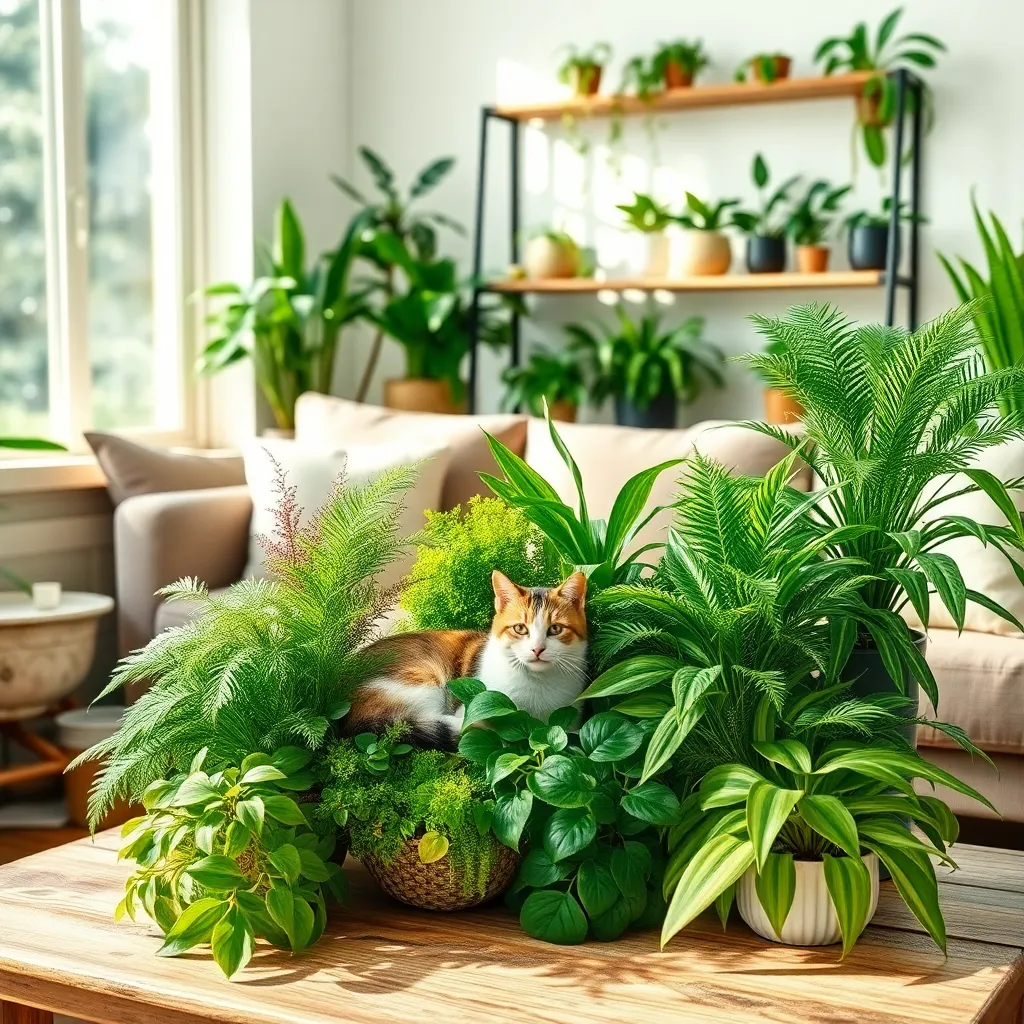
When creating a non-toxic indoor garden, it’s essential to choose plants that are both aesthetically pleasing and safe for pets. For example, the Spider Plant (Chlorophytum comosum) is not only easy to care for but also non-toxic to cats and dogs, making it a popular choice for pet owners.
Opt for plants that thrive in indoor conditions and require minimal maintenance. The Boston Fern (Nephrolepis exaltata) is an excellent option, as it enjoys indirect light and a humid environment, making it perfect for bathrooms or kitchens.
For an indoor garden that’s lush and safe, include a variety of textures and colors with plants like the Areca Palm (Dypsis lutescens). These palms are safe for pets and can grow in indirect sunlight, adding a tropical feel to your living space.
Consider using a high-quality, well-draining potting mix to ensure healthy plant growth. A mix that includes components like peat moss, perlite, and vermiculite will provide the necessary aeration and moisture retention for most indoor plants.
Watering is crucial for maintaining a thriving indoor garden. Most pet-safe plants prefer soil that is kept slightly moist but not waterlogged, so check the top inch of soil regularly and water when it feels dry to the touch.
Advanced gardeners might consider adding a humidifier to their indoor garden space to maintain optimal humidity levels for tropical plants. This will help prevent leaf browning and support overall plant health, especially in dry indoor environments.
Designing Pet-Friendly Outdoor Spaces
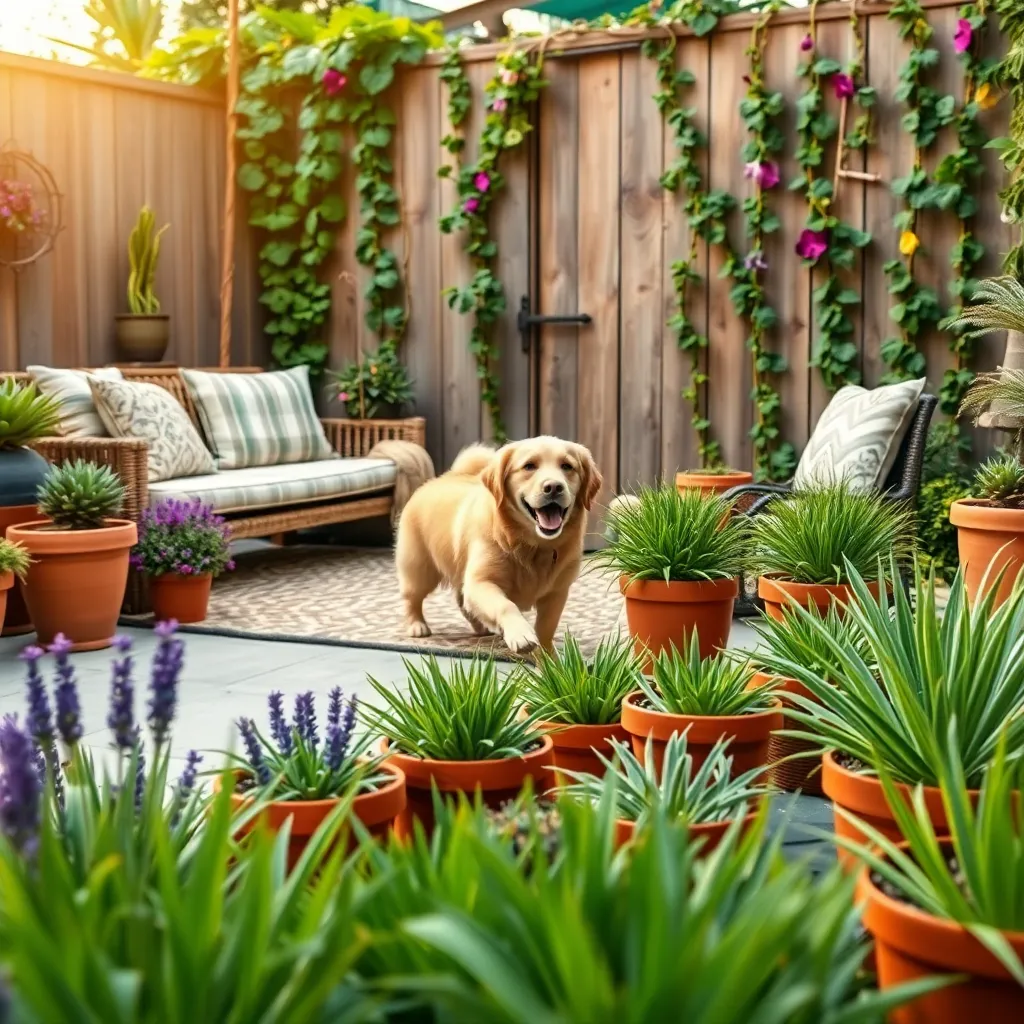
Designing a pet-friendly outdoor space requires careful planning to ensure the safety and enjoyment of your furry friends. Begin by choosing plants that are non-toxic to animals, such as marigolds, sunflowers, and snapdragons, which add vibrant colors without posing a risk to curious pets.
Incorporating a variety of textures and heights in your garden can create an engaging environment for pets while keeping them safe. Use tall grasses like miscanthus for shade and shelter, and consider planting low-growing herbs like thyme or chamomile, which are both safe for pets and provide soft surfaces for them to lounge on.
Maintaining a pet-friendly garden involves more than just plant selection; it’s also about creating a secure environment. Ensure that fencing is sturdy and without gaps to prevent adventurous pets from wandering off. Additionally, create designated play areas with mulch or sand to provide safe spots for digging and exploring.
Watering your garden properly is crucial for plant health and pet safety. Use drip irrigation systems to minimize standing water, which can become a breeding ground for mosquitoes and other pests. Water deeply but infrequently, which encourages deep root growth and reduces the risk of fungal diseases that could harm both plants and pets.
For more advanced gardeners, consider using companion planting to naturally deter pests without the use of harmful chemicals. Planting marigolds alongside vegetables can repel nematodes, while basil can ward off flies and mosquitoes, keeping your garden and pets healthy. This approach not only protects your plants but also ensures that your outdoor space remains a safe haven for your pets.
Maintaining Plants with Pets Around
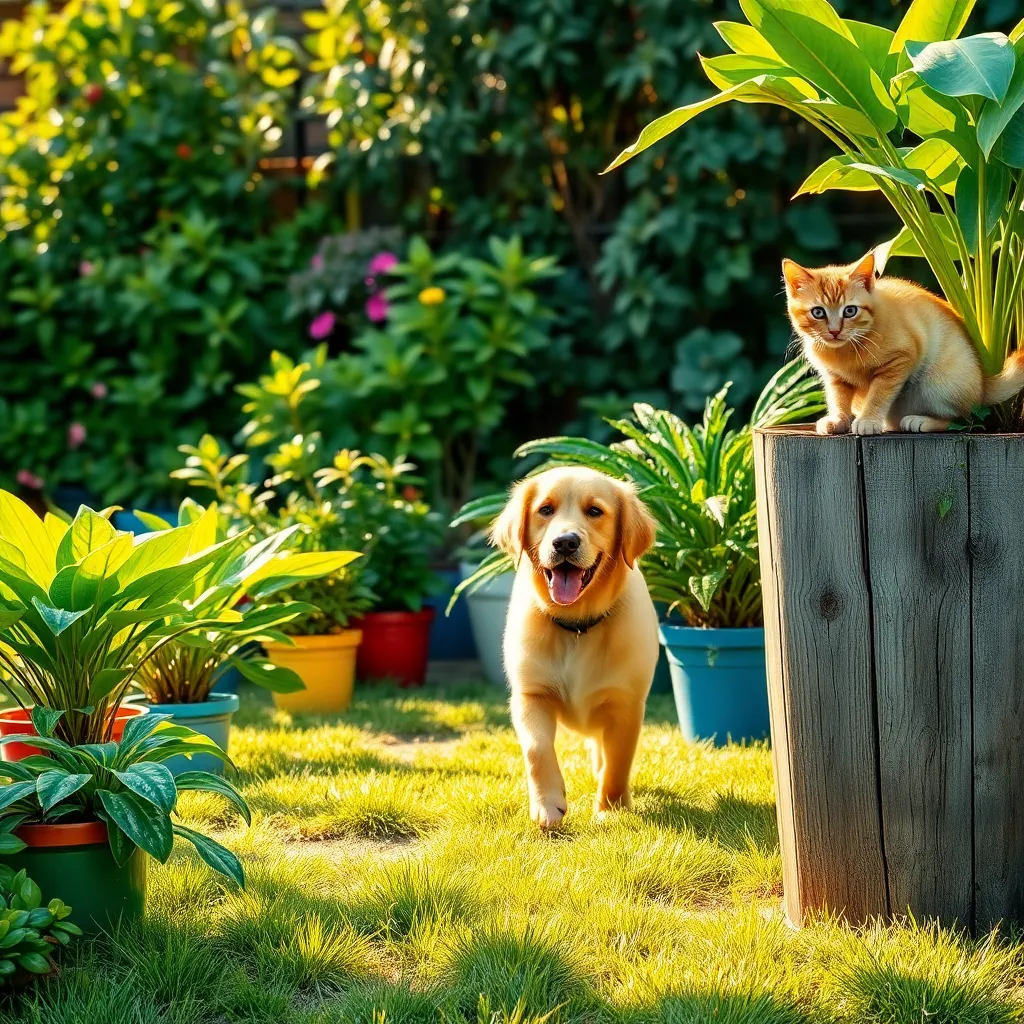
When maintaining plants with pets around, choosing the right location is crucial. Place plants on elevated surfaces or hang them to keep them out of reach from curious pets.
Regularly inspect your plants for signs of distress that could indicate tampering by pets. Look for broken stems or unexplained soil disturbances, which might suggest your pet is interacting with your greenery.
Consistent watering schedules can help plants thrive even in a pet-friendly environment. Use self-watering pots or set reminders to ensure your plants receive adequate moisture without being overwatered.
For those with more experience, consider using natural deterrents to discourage pets from approaching plants. Sprinkling cayenne pepper or citrus peels around the base can be effective, as pets often dislike these scents.
Soil choice plays a significant role in plant health, especially with pets around. Opt for potting mixes that are free from harmful chemicals or fertilizers that could be toxic to animals.
Engage in regular pruning to keep plants healthy and to prevent pets from ingesting dead or decaying plant material. Trim leaves and branches that are within reach to maintain both plant health and pet safety.
Troubleshooting Common Pet-Plant Issues
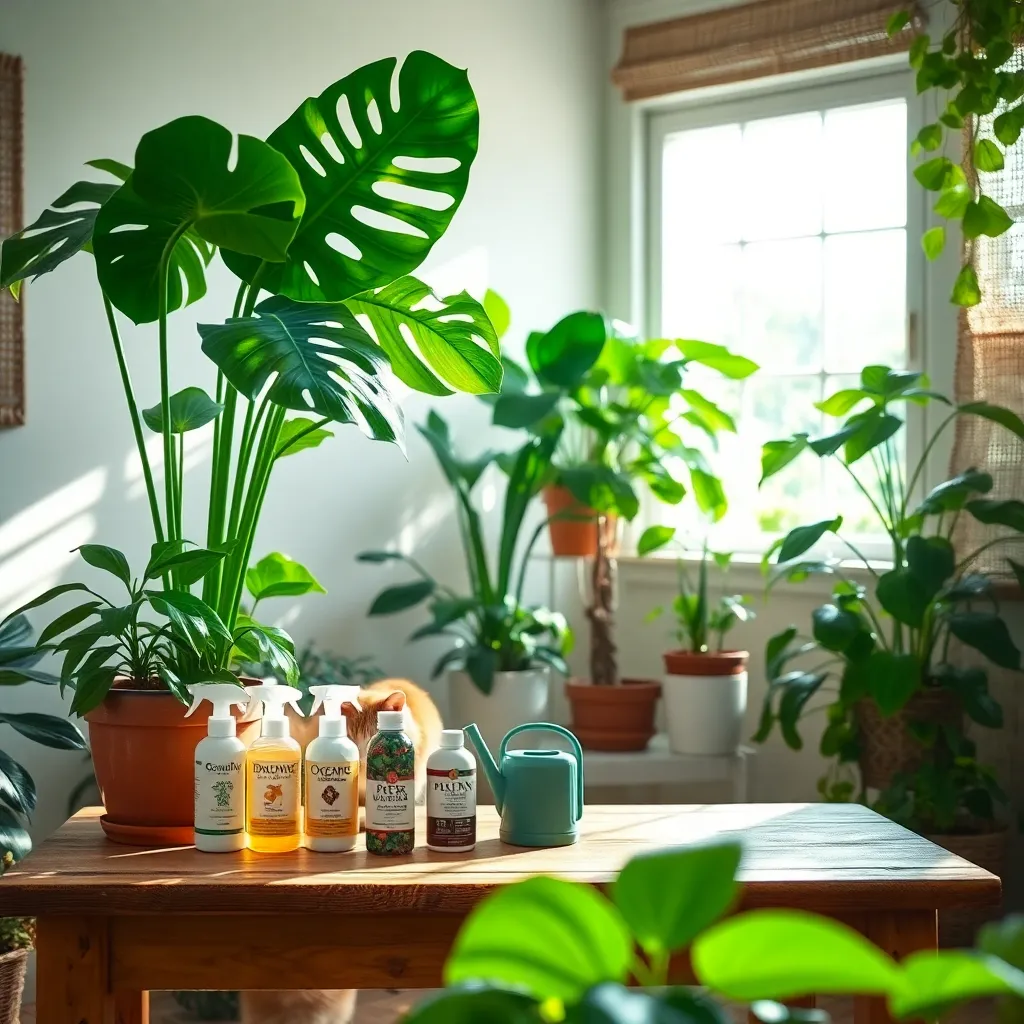
When pets and plants share a home, certain issues can arise, but don’t worry—many can be easily resolved. One common problem is soil disturbance, often caused by curious pets digging around. To prevent this, consider placing a layer of decorative rocks or a wire mesh over the soil surface. This not only deters digging but also adds a decorative touch to your plant displays.
Another issue is leaf nibbling, which can be a concern for both plant health and pet safety. If your pet shows interest in munching on leaves, try spritzing the foliage with a mixture of water and lemon juice as a deterrent. Additionally, providing your pet with safe chew toys can redirect their attention away from your plants. This method helps protect your plants while keeping your pet happy and occupied.
Some plants can suffer from overwatering, especially when pets knock over watering cans or bowls. To manage this, ensure that each plant has a proper drainage system by using pots with drainage holes and well-draining soil, like a mix of peat and perlite. Monitor soil moisture levels by sticking your finger about an inch into the soil; if it feels dry, it’s time to water. This simple practice helps maintain the right moisture balance and prevents root rot.
Finally, maintaining a pet-friendly and plant-friendly environment requires vigilance and occasional adjustments. If you notice signs of plant distress such as yellowing leaves or stunted growth, check for potential pet-related causes like excessive paw traffic or accidental tipping. Rearrange your plant setup if necessary to create safer zones, ensuring both your plants and pets thrive harmoniously. With these strategies, you can enjoy a beautiful, safe, and thriving indoor garden.
Conclusion: Growing Success with These Plants
In the delightful journey of cultivating a pet-friendly home, we’ve explored five key concepts that intertwine nurturing relationships with both our plants and furry companions. First, understanding plant toxicity ensures pets’ safety, as knowing which plants are safe fosters a harmonious environment. Second, selecting non-toxic plants like spider plants or Boston ferns enhances your home’s beauty without compromising your pets’ health. Third, strategic plant placement not only decorates but also safeguards your curious pets. Fourth, maintaining a routine of care for both plants and pets strengthens your commitment to a lively home. Lastly, fostering a shared environment where pets and plants thrive reflects the balance and care essential in any relationship.
As an immediate next step, consider assessing your current plant collection and making any necessary swaps to ensure a safe and joyful space for all inhabitants. By saving or bookmarking this article, you’ll have a trusted resource at your fingertips, ready to guide you in nurturing both your green and furry family members. As you continue to cultivate these nurturing environments, remember that attentiveness and care are at the heart of any successful relationship, promising a future filled with joy and companionship. Embrace this path, and watch your relationships blossom!
